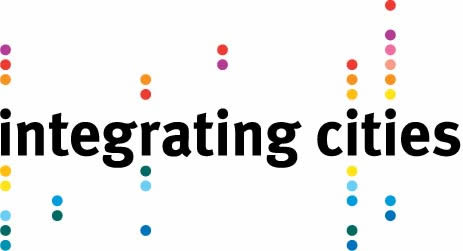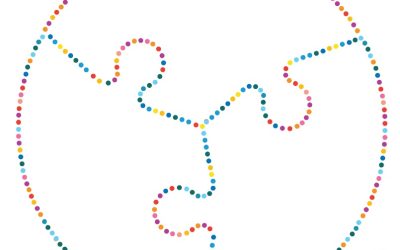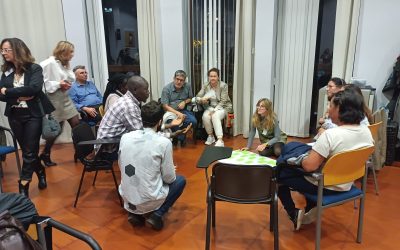Half of all Amsterdam residents are first – or second-generation migrants. In order to ensure that integration can occur, and the efficacy of integration methods can be measured, the city keeps careful track of the makeup of its population. It is also careful to understand the challenges that its migrant population faces.
Learning the language is one of the most important elements of a successful integration. The city organises 5000 language courses a year under its adult aducation program and works together with civil society and volunteers to ensure that migrants can access training in language skills, as well as in other skills necessary to engaging with the local society and the labour market.
TRAINING FOR WORK
Access to the labour market is something that Amsterdam considers fundamental to integration, and when, for example, asylum seekers receive refugee status, one of the city’s first priorities is to give them work opportunities. To achieve this, the municipality assigns a case manager to refugees, with each manager dealing with 50 newcomers. The push for access to work and education spans multiple departments, from health to housing as well as employment.
BUILDING BRIDGES WITH EMPLOYERS
Getting migrants into employment does not just mean working with migrants, but also with employers. The city works to build bridges between migrants and businesses and provides interview training and vocation-specific language training. This involves matching migrants with appropriate employment opportunities and preparing businesses to facilitate the needs of migrants.
This work is not limited to the very first period of guiding the newcomer, but sustained throughout by continued contact and periodical evaluation. Through this programme, the city is working towards the concrete goal of having 50% of its refugees financially independent within three years after their arrival in the city.
IN THE PALM OF YOUR HAND
Technology can also be part of the solution. Open Embassy’s ‘Welcome App’ is a platform that connects newcomers with locals and the local administration. It provides information about everyday issues, from language issues, to local events, to building social networks and accessing work opportunities. The app now has 7,500 users, and its inventors are working on implementing it is other locations as well.
Open Embassy also works to train civil servants in communicating with refugees, and to research and map issues that migrants have and present these to local government in a legible form.
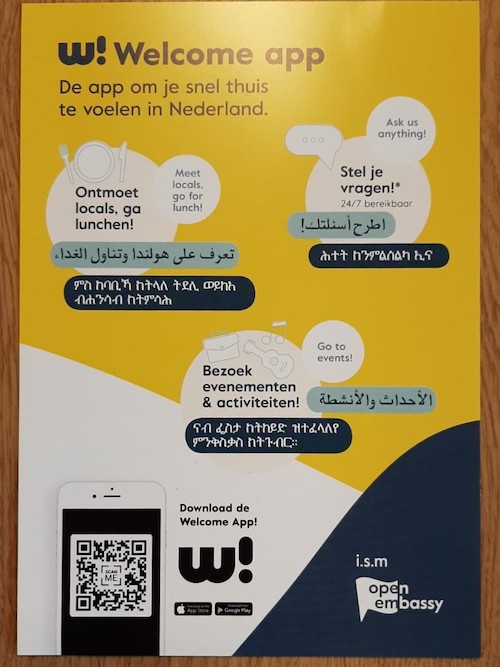
EFFECTIVE DELEGATION
Integration has a lot of facets, and Amsterdam has reached the conclusion that local actors other than the municipality may be best suited to tackle some of these problems. However, that does not mean that the city reneges on its responsibilities. Instead it works to facilitate these other actors, for example by providing spaces and funding to initiatives like ‘sport buddies’ and language cafés, initiatives that are often run by volunteers.
VOLUNTEER OPPORTUNITIES
Volunteering is a popular activity in Amsterdam, with 200,000 volunteers active in the city. A volunteer centre works to coordinate these activities, helping people of all backgrounds find voluntary work that is meaningful for them and supporting organisation that work with volunteers through training and consultation. Volunteers create an individual profile through the centre, and then apply for listed vacancies.
Volunteering can provide great opportunities for migrants in Amsterdam. Not only is it a great way for them to practice their Dutch language skills, but it also gives them experience that can be used for job applications, and a route through which they can extend their social network.
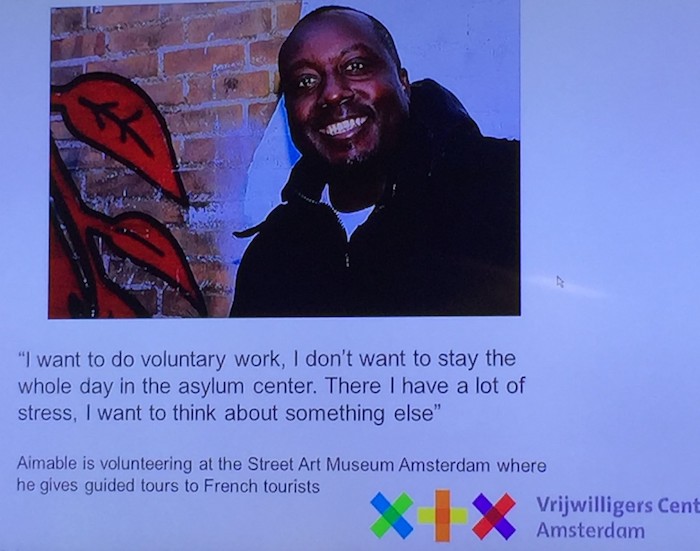
VOLUNTEERING FOR REFUGEES
The centre sees a lot of value in providing volunteering opportunities for asylum seekers. This is an avenue for them to begin integrating as soon as possible, as attested to by one asylum seeking volunteer who says, “I want to do voluntary work, I don’t want to stay the whole day in the asylum centre. There I have a lot stress. I want to think about something else.”
COMMUNITY AT THE CENTRE
Integration will never occur if there is no space for it to do so. One such space in Amsterdam is the Community Centre, where a diverse team of volunteers, including teachers, counsellors and members of the local police engage in informal discussions, digital training and communal meals.
THE END OF THE RAINBOW
Another intitiave comes from the Rainbow Foundation, which provides eight centres that cater to vulnerable groups who have fallen on hard times. It is 70% financed by the municipality. Most of the clientele are victims of human trafficking, homeless, or suffering from drug addiction. The centre gets almost 5,000 visitors and is staffed by 1000 volunteers, who receive training and supervision, and 190 employees. Through one-to-one coaching and a reintegration programme with a focus on jobs and skills, the centre empowers its visitors to get back on their feet.
